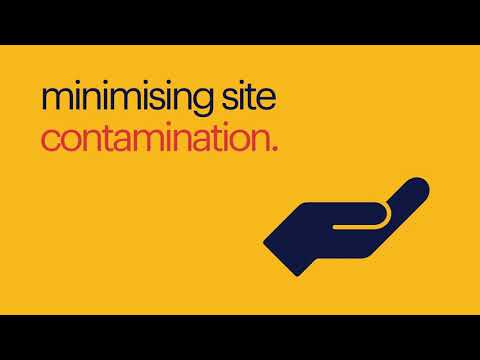how to stay safe in engineering with COVID-19.
We've condensed our full guide to a short video animation, full of the top tips and easy to follow guidelines to staying safe during a pandemic. And we're always to hand to help, so if you have any questions or just want to talk, get in touch today.
four ways to stay safe in engineering roles.
1 utilising infrastructure and technology.
Consider how and in which ways you are or could be using technology to continue working effectively off-site and collaborate with teams?
A simple way to prevent interaction with others is to physically distance yourselves from them. In order to stay connected and working we need to rely on technology to communicate and interact. Some methods of new technology even allow us to work remotely often from home. We outline some of our methods to keep workers safe and connected:
- Online video conferencing
- Virtual site tours/walkthroughs (VR)
- CAD planning shared online amongst teams
- Robot construction processes
- Drone-based surveying of sites relaying video information to online teams.
- Using open-air transport methods over enclosed spaces i.e stairs over lifts.
- Monitoring health statistics of workers to ensure a healthy workforce (i.e temperature)
- Replacing touch monitoring security with non-touch alternatives (i.e fingerprint scanners for face ID)
- Increased ventilation for confined spaces
Some of the aforementioned tips like monitoring health statistics have already been adapted in China to monitor worker temperatures with devices in construction helmets, one of the key indicators of coronavirus symptoms. Having these methods in place allows for an ongoing look at a complete workforce's health statistics and can adapt to changes quickly, predicting problems before they happen.
Simply solutions such as replacing touch machines with non-touch alternatives, using open-air spaces and installing improved ventilation all contribute to reducing unnecessary contact.
2 how workers can interact safely on site.
Think about the steps you're taking to enable people to interact safely, and what you could be doing?
We break down some key ideas to control worker interaction on sites:
- Caps on the number of people on-site
- Staggered breaks
- Bring own food/drink on site
- Avoid close-work
- Staggering start & finish times
A lot of these points may seem straight forward but aren't always easy to implement. It is worth setting some time to plan out how this can be achieved organisationally and structure sites to be able to adapt to the new operations. Limiting numbers on sites will control the flow of people traffic and the same can be achieved at each station across sites. Setting times for a limited number of people per hour, for example, allows controlled gatherings and within reason allows some workers to finish earlier or start later than others.
3 site contamination.
What measures have you undergone or are considering to take to minimise the risk in the future across sites to reduce and control contamination?
We suggest following these bullet points to create and manage your plan for success in protecting your workers:
- Additional cleaning stations using disinfectant
- Ensuring single-use PPE is disposed of securely
- Investigation of sites to ensure social distancing can be safely enforced
- Increased sanitation facilities (toilets, bins, washing stations)
- Implement a regimented policy to adhere to if experiencing COVID-19 symptoms.
General improvements to hygiene will ensure a more safe and healthy working environment. The correct use of PPE and enhance security measures related to hygiene can help improve the risk of contamination. By assessing individual sites have the capability to make these changes you can roll out a wider plan to multiple sites to improve the safety features.
4 personal safety.
What steps are you making individuals take on your work sites, to help them remain safe?
- Travel to site alone
- Avoid public transport
- Wear Personal Protective Equipment
- Ensure social distancing
- Hygiene breaks
The above points all relate to the governmental guidance on staying safe from coronavirus risk. These should be relayed to all workers and assumed yourself to ensure good practice of hygiene control.


